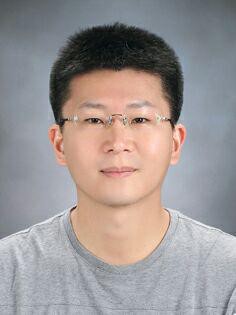

김이준 교수
연구위원, 인지 및 사회성 연구단, 기초과학연구원
E-mail: joon@ibs.re.kr
Research Topic
Neural basis of statistical perception and abstract knowledge
In order for us to effectively navigate the world, it is essential that our perceptual system rapidly distils a vast amount of sensory data into a compact representation that captures important image structure. Growing evidence shows that perceptual systems summarize complex dynamic sensory signals with their central tendency such as mean, variance and distribution by exploiting statistical regularities of sensory signals over space or time. Also at higher cognitive processing level, our minds can learn concepts, acquire language, and grasp causal relations by making strong generalizations and constructing powerful abstractions. How does abstract knowledge guide learning and understanding? What forms does abstract knowledge take across different cognitive tasks? How do we acquire abstract knowledge? Our research aims at better understanding how our brain represents the abstract information covering from statistical summary of sensory signals to semantics, which ultimately defines our experience of the world. As statistical summary representation is the starting point of the abstraction process at the perceptual level, we are interested in cracking brain’s code underlying statistical summary representation that has been suggested to evoke a coarse but vivid impression of the rich surroundings with a single glance. This will also further our understanding of the abstraction ability, the most unique element of human general intelligence. We deploy multiple techniques ranging from behavioral methods such as psychophysics and eye tracking to brain imaging techniques such ECoG, EEG, and MRI. In order to better understand how various perceptual, cognitive, and conscious processes unfold in time, we also use machine learning techniques to probe the spatiotemporal pattern dynamics of brain imaging data.
Research Interests
Cognitive Neuroscience, Data Neuroscience, Statistical Perception, Abstraction, Concept Learning, Structure Learning, General Intelligence, Attention, Consciousness, Brain-imaging
학력
- 학사, 서울대학교 (1998) – Physics
- 석사, 서울대학교 (2000) – Theoretical Physics
- 박사, Northwestern University (2008) – Cognitive Neuroscience
주요 경력
- 2008 - 2010 Postdoctoral Fellow in Center for Neural Science, New York University
- 2010 - 2014 Postdoctoral Fellow in Smith-Kettlewell Eye Research Institute
- 2014 – 2020 연구위원 (영년직 트랙), 인지 및 사회성 연구단, 기초과학연구원
- 2020 – 연구위원, 인지 및 사회성 연구단, 기초과학연구원
대표 논문
- Woojae Jeong, Seolmin Kim, Yee-Joon Kim, Joonyeol Lee (2020). Predicting trial-by-trial variation in oculomotor behavior using multivariate electroencephalography theta phase, IEEE Access (Accepted).
- Woojae Jeong, Seolmin Kim, Yee-Joon Kim, Joonyeol Lee (2019). Motion direction in multivariate electroencephalography activity for smooth pursuit eye movements, Neuroimage, 202:116160.
- Byung-il Oh, Yee-Joon Kim, Min-Suk Kang (2019). Ensemble representations reveal distinct neural coding of visual working memory, Nature Communications, 10, 5665
- Yee-Joon Kim, Jeffrey Tsai, Jeffrey Ojemann, Preeti Verghese (2017). Attention to multiple objects facilitates their integration in prefrontal and parietal cortex. Journal of Neuroscience, 37(19), 4942-4953
- Chuan Hou, Yee-Joon Kim, Preeti Verghese (2017). Cortical sources of Vernier acuity in human visual system: an EEG source imaging study. Journal of Vision, 17(6):2, 1-12
- Chuan Hou, Yee-Joon Kim, Xin Jie Lai, Preeti Verghese (2016). Degraded attentional modulation of cortical neural populations in strabismic amblyopia. Journal of Vision, 16(3):16, 1-16
- Yee-Joon Kim, Preeti Verghese (2014). The influence of segmentation and uncertainty on target selection. Journal of Vision, 14(3):3, 1-11.
- Yee-Joon Kim, Preeti Verghese (2012). The selectivity of task-dependent attention varies with surrounding context. Journal of Neuroscience, 32(35), 12180-12191.
- Preeti Verghese, Yee-Joon Kim, Alex W. Wade (2012). Attention selects optimal neural populations in V1. Journal of Neuroscience, 32(46), 16379-16390.
- Timothy D. Sweeny, Marcia Graboweck, Yee-Joon Kim, Satoru Suzuki (2011). Internal curvature signal and noise in low- and high-level vision. Journal of Neurophysiology, 105(3), 1236-1257.
- Yee-Joon Kim, Marcia Grabowecky, Kenneth Paller, Satoru Suzuki (2011). Differential roles of frequency-following and frequency-doubling visual responses revealed by evoked neural harmonics. Journal of Congnitive Neuroscience, 23(8), 1875-1886.
- Yee-Joon Kim, Marcia Grabowecky, Kenneth Paller, Krishnamurti Muthu, Satoru Suzuki (2007). Visual spatial attention induces synchronization-based response gain in steady-state visual evoked potentials. Nature Neuroscience, 10(1), 117-125.
- Yee-Joon Kim, Marcia Grabowecky, Satoru Suzuki (2006). Stochastic resonance in binocular rivalry. Vision Research, 46, 392-406.










 IBS School
IBS School




